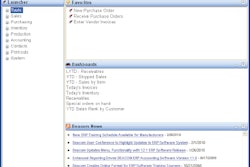
As sales reps continue to deliver new business contracts, manufacturing executives often find themselves more concerned than excited about accepting the sale. Can these new orders be filled with our current production capacity? Or does an investment need to be made to grow the production lines? Many find themselves trying to answer these production capacity questions by filtering through complex spreadsheets and pivot tables.
Supply chains are continuing to prove more dynamic than ever before and businesses need to react quickly to changes in customer demands. At any point in time, a customer can announce shifts in forecasting or a new client can offer an opportunity to grow the production volume. Without strong technology in place to review production capacity quickly, there is little confidence in determining how the increased volume can be achieved.
The right production capacity planning system can deliver concrete data driving business decisions that will grow the company. Approach the evaluation process carefully and commit to a system that can deliver:
- Customer forecasting. Customers in today's contract manufacturing world provide their manufacturers with a demand forecast for each product line. Make sure the capacity planning system has the ability to input these forecast sheets for generating accurate capacity calculation. The forecast sheet should include the customer's part number, and the expected daily, weekly or monthly sales volume.
- Product routings. While customer forecasts generate the expected volume, the organization needs to establish calculations that determine how long it takes to manufacture a product based on batch size. This is often established through product routings that define the production line and time required to make a specific batch size. These routing calculations can get tricky, so when reviewing a new system, be sure to run through a few examples. Apply various routing sequences unique to the business to make sure the system can handle it.
- Production capacity reporting. Creating a production capacity report with all of the data from customer forecasts, product routings and the expected running hours of each production line should be quick and simple. A successful report should allow managers to quickly review and understand where and when there is open capacity, or a potential logjam. It is best to find an option that can provide a report that can be broken down by forecasting period—day, week or month—against the production lines. This report is the first stop after a sales representative announces a new business win.
- Planned and unplanned maintenance reporting. A capacity system is not complete without factoring maintenance requirements into the capacity plan. The system should allow users to build in scheduled downtime and provide reporting capabilities for unplanned downtime. In determining the need for production line expansion or more efficient maintenance uptime, this report plays a critical role.
- Labor constraint requirements. Labor is not always considered a capacity constraint for contract manufacturers as it can easily scale based on demand. However, some companies require specifically trained employees to operate the different production equipment. For these organizations, labor constraints should be factored into the capacity reporting features of the system.
Take action to prevent assumptions from being the foundation of production decisions. Especially when evaluating if current production lines can handle new business or investments need to be made for more equipment, a strong understanding of a production capacity is critical. By committing to a solution that can deliver on the above five capabilities, managers can drive revenue growth and position the manufacturing business for strong future development.
Scott Deakins is the chief operating officer of Deacom Inc. With over 20 years of enterprise resource planning (ERP) experience, the Deacom team created a unique single-system ERP solution under the guiding principle of complexity made simple. As such, the DEACOM ERP solution requires no customization, and is built specifically for batch and process manufacturers to achieve business goals as simply as possible. For more information, please visit www.deacom.com.



















